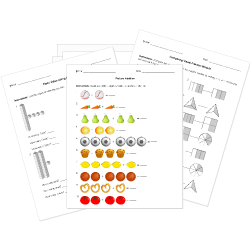Common Core Standard 8.SP.A.1 Questions
Construct and interpret scatter plots for bivariate measurement data to investigate patterns of association between two quantities. Describe patterns such as clustering, outliers, positive or negative association, linear association, and nonlinear association.
You can create printable tests and worksheets from these questions on Common Core standard 8.SP.A.1! Select one or more questions using the checkboxes above each question. Then click the add selected questions to a test button before moving to another page.







